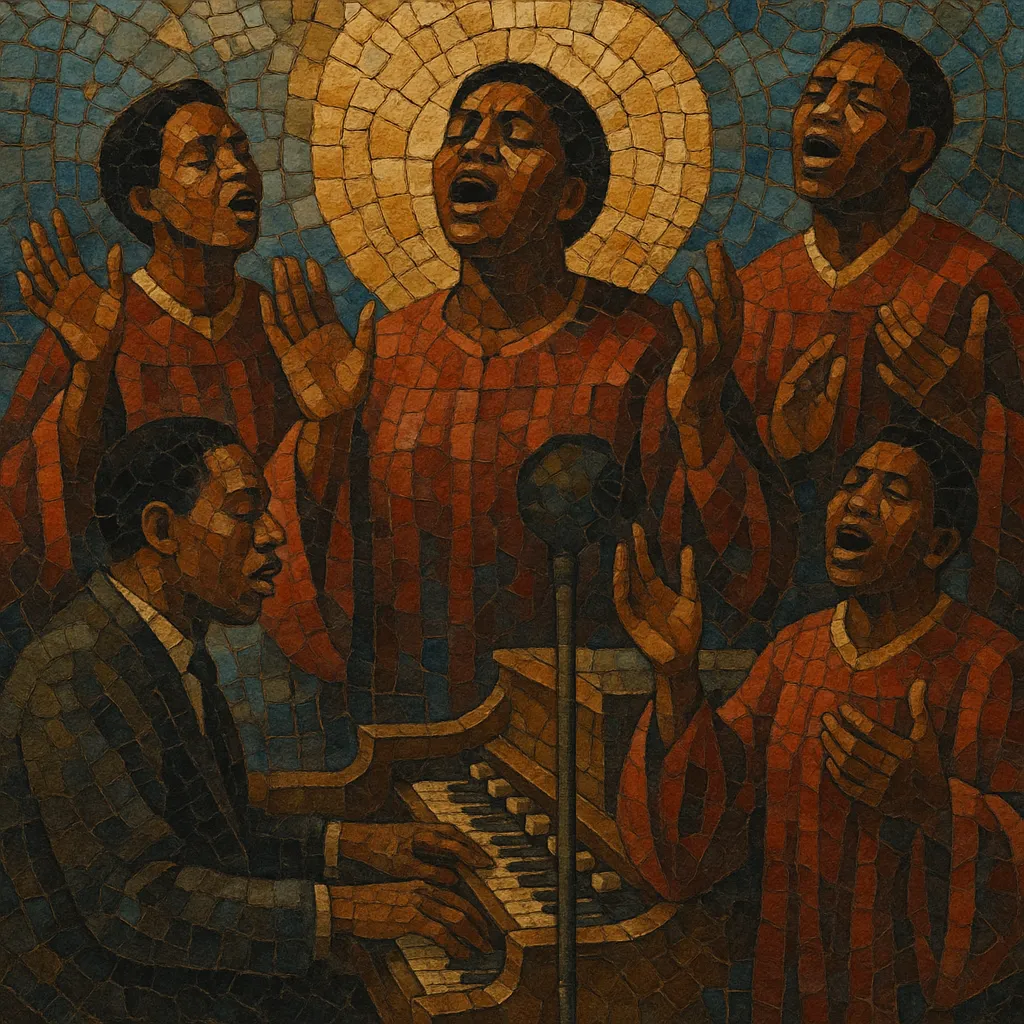
Traditional Black Gospel is a sacred African American musical tradition that crystallized in the early 20th century and reached a "golden age" from the 1930s to the 1950s.
It pairs blues-inflected melodies and jazz harmonies with congregational call-and-response, handclaps, and testimonies of faith, hope, and deliverance.
Rooted in spirituals, ring shouts, hymns, and Holiness-Pentecostal worship, it features powerful lead vocals, responsive choirs or quartets, and driving rhythmic feels (often 12/8 shuffle or swung 4/4) supported by piano or Hammond organ, tambourine, and later rhythm sections.
The style is performance-centered and participatory: songs intensify through vamping, ad‑libs, modulations, and dynamic swells, transforming devotional texts into communal, ecstatic praise.
Traditional Black Gospel grows from 19th‑century African American sacred practices—spirituals, ring shouts, lined‑out hymns, work songs, and Holiness‑Pentecostal worship. These sources blended West African call‑and‑response and polyrhythm with Christian texts. The Great Migration (1916–1970) carried these church traditions from the rural South to urban centers like Chicago and Detroit, where new ensembles, publishing networks, and performance circuits formed.
Thomas A. Dorsey—often called the “Father of Gospel Music”—fused blues tonalities and expressive vocalism with sacred lyrics, writing songs such as “Precious Lord, Take My Hand.” With colleagues like Sallie Martin and Roberta Martin, he helped establish choir conventions and a song‑publishing economy, centering Chicago as a gospel hub. Early instrumentation prioritized piano/organ and tambourine; quartets frequently sang a cappella or with minimal accompaniment.
This period saw the rise of star soloists and powerhouse quartets/choirs. Mahalia Jackson brought the style to national audiences with deeply resonant, blues‑colored interpretations. Quartet groups—The Dixie Hummingbirds, The Soul Stirrers, The Blind Boys of Alabama, and The Five Blind Boys of Mississippi—refined tight harmonies, dynamic vamps, and showmanship. Sister Rosetta Tharpe’s electric guitar and crossover performances connected gospel’s energy to emerging rhythm & blues and early rock & roll.
Traditional Black Gospel decisively shaped rhythm & blues, doo‑wop, soul, Motown, and rock & roll (through vocal timbre, harmonies, and performance intensity). Within the church, it paved the way for contemporary gospel, mass choirs, and urban contemporary gospel, while its worship practices influenced modern praise & worship. Even as styles updated through the 1960s and beyond, traditional gospel’s core aesthetics—call‑and‑response, testimonial lyrics, vamps, and communal participation—remain foundational to Black sacred music and American popular music at large.

